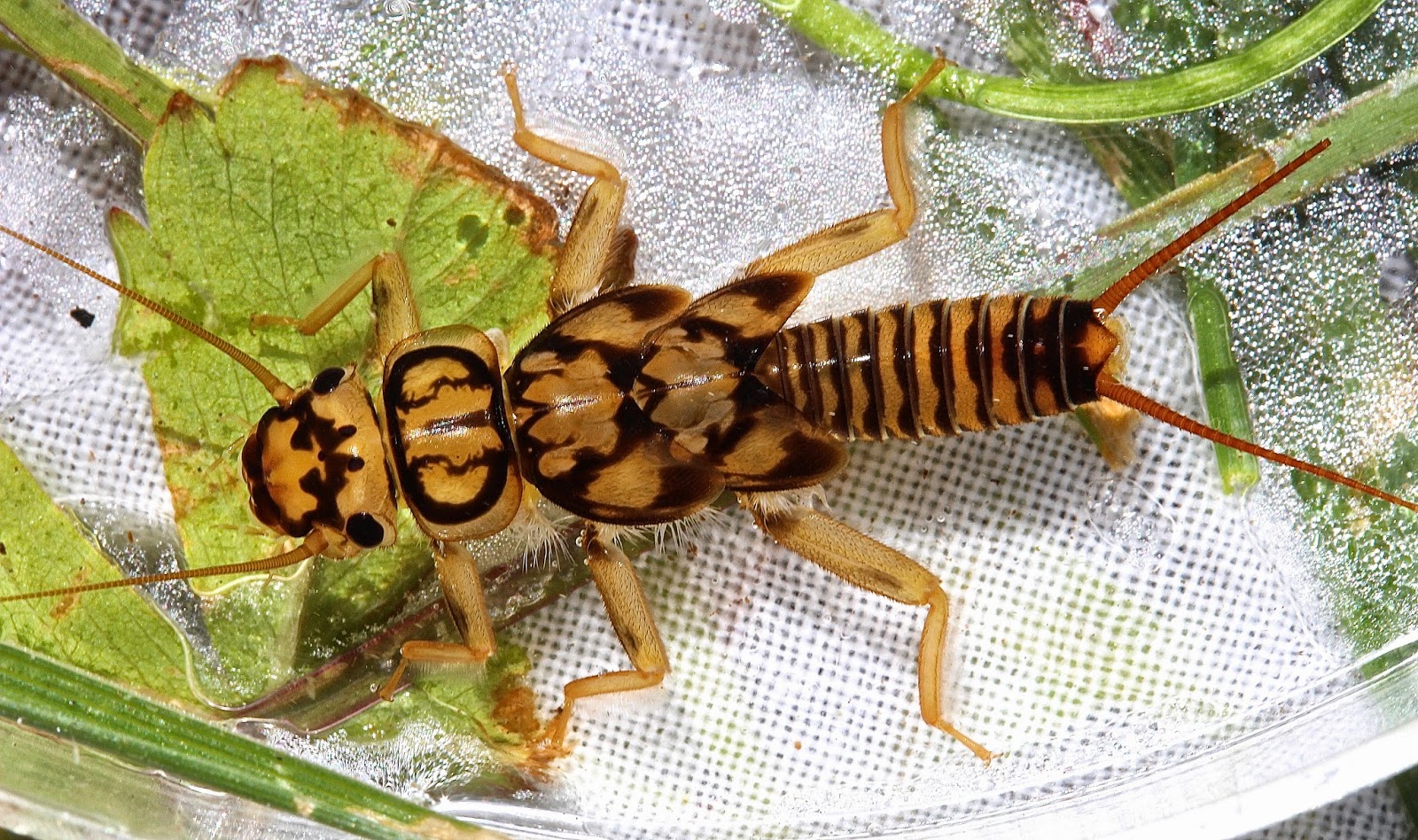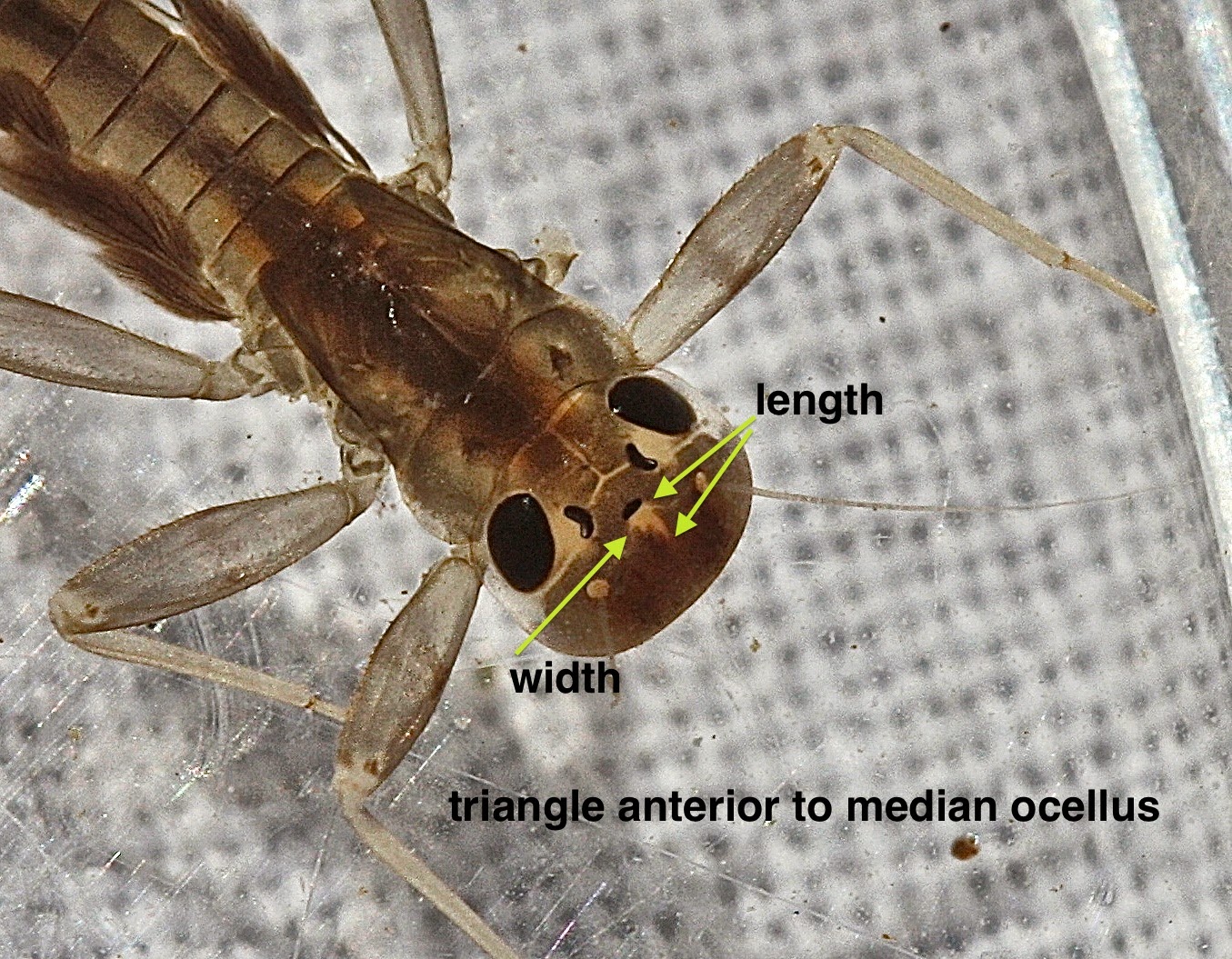Just a super day at the Rapidan River: I didn't know how good it had been until I downloaded my photos. And the focus today is on stoneflies.
In the photo at the top of the page, a rarely seen common stonefly, Agnetina capitata, and we've got a mature one! The genus ID, Agnetina, is determined by two things, and we can see both of them in this picture: 1) the occipital setal row is complete, and 2) anal gills are present.
For the species ID, let me read you Beaty's description, then we'll look at the key features in some close-ups.
For the record, this nymph was 14 mm. In the following photo, we can clearly see all of the features on the head noted by Beaty. The dark area between the lateral ocelli is indeed lighter as it extends in the direction of the median ocellus.
And for the abdominal bands and stripes and the features on tergum 10 ---
On this nymph, there is a "small median projection directed distally" as part of the dark band on tergum 10.
Perfect fit. A. capitata is attested in the state of Virginia (Stewart and Stark, Nymphs of North American Stonefly Genera, p. 320). I hope to find out where else it's been found and find out if it's "rare" in this state as well.
_________________
Moving on, for the second time I found the Perlodid stonefly Isoperla orata -- I've only found it at the Rapidan River -- and at the same time found a number of Isoperla nr. oratas, one of the Isoperlas that remains undescribed and unnamed (I. nr. orata is just a "name" that I use).
Isoperla orata
Isoperla nr. orata
We can "compare and contrast" using Beaty's description of Isoperla orata. "I. orata -- nymphs 11.5-14.5 mm; lacinia with apical tooth as long as sclerite bearing it, with a tuft of setae below the subapical tooth; head with a dark transverse band through the median ocellus and ocellar triangle enclosed with a large pale spot; dorsum of abdomen with three dark, narrow longitudinal stripes, the central stripe often faint or discontinuous. ... Uncommon." ("The
Plecoptera," p. 24) Have a look.
Also note how the pale areas on the terga -- especially the anterior terga -- are almost fully enclosed by dark banding, taking a circular form. (For a more detailed look at the features of I. orata, see the entry posted on 6/2/13.)
Isoperla nr. orata differs in two significant ways: 1) the pale spot in the ocellar triangle is not fully enclosed, appearing open at the back, and 2) the middle longitudinal stripe is as wide as the lateral stripes, not at all "faint or discontinuous."
The lacinia of the two species are almost exactly the same. But, on I. nr. orata, there are 5-6 setae in the tuft below the subapical tooth: on I. orata the setae are 3.
I very much hope that my "I. nr. orata" is given a real name when Kondratieff publishes his study of Isoperlas.
_______________-
One other "double" showed up today: I found both Isoperla holochlora and Isoperla nr. holochlora. The quick way to tell them apart is to look at the large pale area on top of the head. On I. holochlora, it is fully open all the way to the labrum; on I. nr. holochlora, only the middle part of the spot reaches out to the labrum.
I. holochora
I. nr. holochlora
____________________
Off to Europe on Thursday for a trip up the Rhine. Back to the streams on June 11 or 12. Gonna be hard to beat a day like today!
A. capitata
I. orata


























































